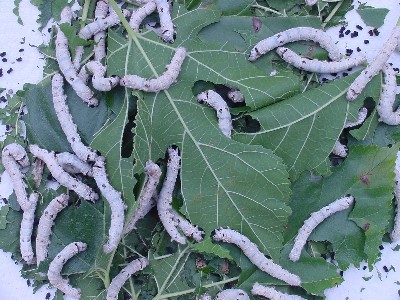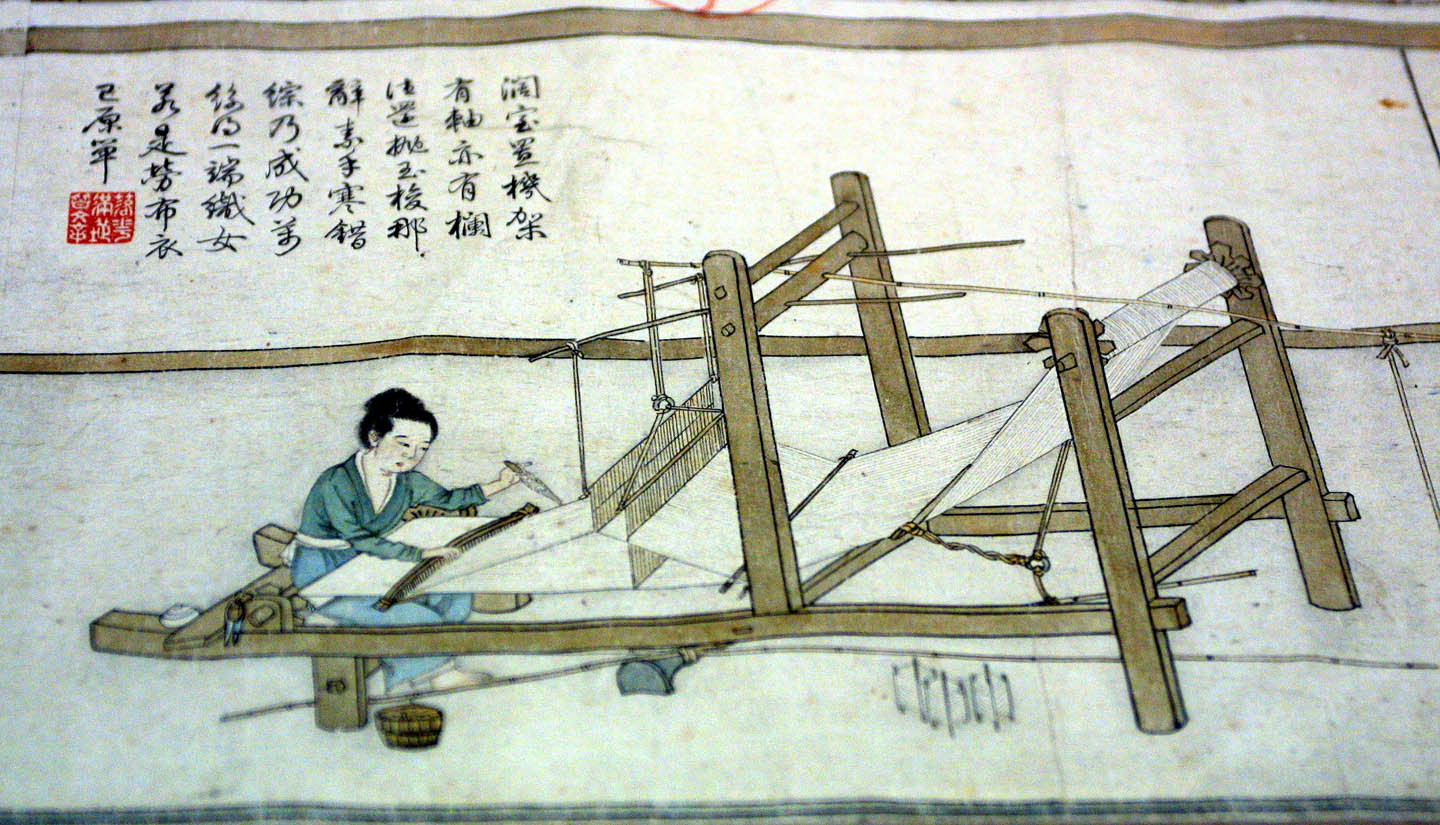White Mulberry : Sericulture
Sericulture, otherwise known as the culture of silk/science of silk production has become a worldwide industry. The Romans deemed the fine and luxurious fabric as “Sericum,” the Italians “Seta,” the French “Soie,” and the English use the term Silk (Kenrick, 1835).
There are many steps to producing silk. The silkworm otherwise known as the Bombyx mori is the first producer of “silk”. This caterpillar was domesticated and relies on humans to survive (Weil, 2012). The useful and juvenile insect produces a silk cocoon made from its salivary glands. The silk cocoon is considered “raw silk” and must be further refined before it is woven to make fine fabrics (CISEO, 1997). Typically, the cocoons are boiled and then the individual strands are separated. Several strands of this fine silk filament are used to make a silk thread, which can be used as fishing line or further woven into fabric (Turpin, 2005).
By 2700 B.C.E., the Chinese were already developing the silk industry (Kenrick, 1835). The popularity of the White Mulberry tree emerged when its importance to the silk producing process was discovered. A great myth and its variations about the beginning of the Silk Industry arose from the tree’s native land, China.
In one myth, an Emperor by the name of Houng-Ti, also known as the “Emperor of the Earth” and the “Yellow Emperor” came upon the “Silkworm Goddess”. She rewarded him with the silk worm, as a gift for winning a recent war (Hunan University, 2011). Other stories tell of how Emperor Houng-Ti entrusted his wife Si-ling-chi to enhance the art of garment making and to study the silk worm (Kenrick, 1835). According to one legend, it was Si-ling-chi who discovered silk when a silk worm’s cocoon accidentally fell into her cup of tea. She went to pick the cocoon out of her tea, and noticed it had unraveled into a fine silk fiber. From then on, she fostered the process of weaving silk with the help of her company of ladies of the court. Some legends acknowledge her as the Goddess of Silk. (Weil, 2012). Much of the early silk industry is attributed to Empress Si-ling-chi, who supposedly introduced worms along with the trees to the royal apartments, where they were sheltered and protected. This allowed for greater production of silk (Kenrick, 1835).
Just as Empress Si-ling-chi knew, it was noted by a distinguished American professor that the silkworm best received the White Mulberry leaves. When the White Mulberry carried smaller and less appealing fruits, it would bring silk worms to produce stronger silk (Rafinesque, 1839).


